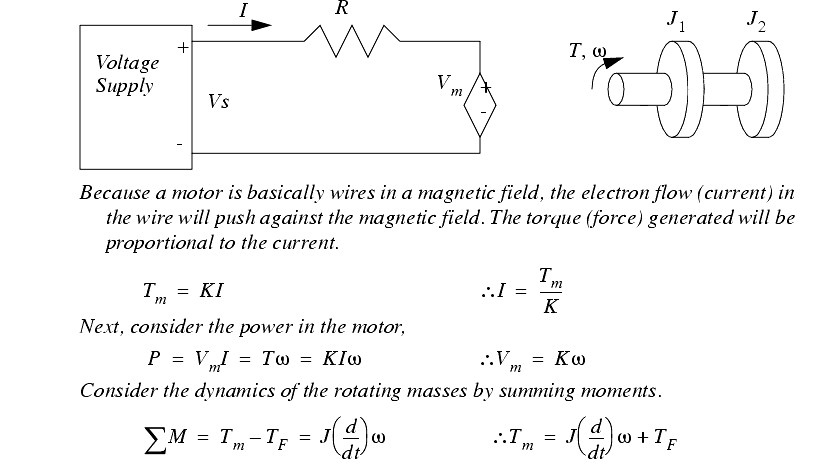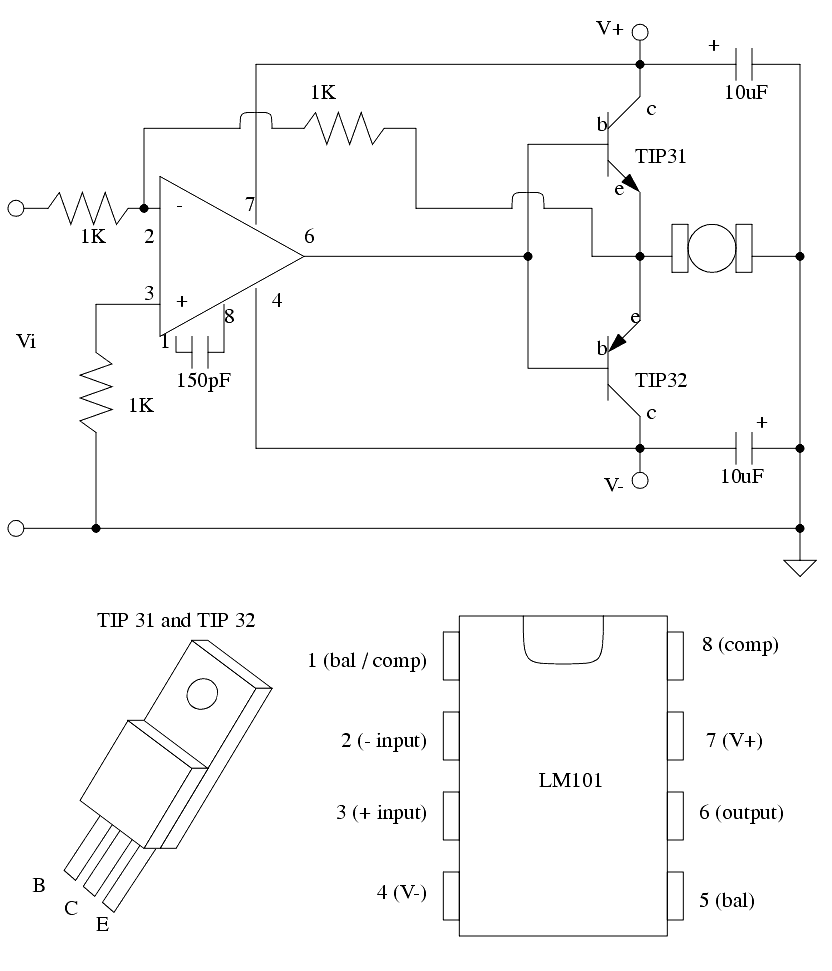
|
|
|
2.3 Lab - Motors and Tachometers
������������2.3.1 Theory
������������The differential equation is derived in Figure 2 and Figure 3 to include a term for friction. In the derivation it is assumed that the motor is turning, and the friction is dynamic. Clearly the motor will not turn if the motor torque is less than the static friction limit.

The coefficients for the differential equation in Figure 3 can be found for the motor in a dynamic case using steady state velocities. The static torque value can be found using the deadband limits.

Eventually we will use the motors to control systems. In a simple form the motor can be turned on or off with transistors or relays. However we will want to vary the motor speed continuously over the range of operation. To do this we need a power amplifier that will work over a large range, as shown below. In this circuit the two transistors will drive the motor so that the voltage to the motor matches the input voltage. To do this the TIP 31 transistor will will be on when the voltage to the motor is positive, and current will flow left to right. When the TIP 32 transistor is on the voltage to the motor is negative and the current flows right to left. The transistors are controlled by the op-amp. The op-amp is set up as an inverting amplifier with a gain of -1, but it will provide a current amplification. If it was not present and the transistors drew too much current the input voltage would drop.

2.3.2 Procedure
������������1. Lookup the datasheets for the LM101, TIP31, and TIP32. Review these and make notes to identify the function of the devices. Look on the internet for information on Class A, B and AB amplifiers and make notes.
2. Build the circuit redrawn below. Note: do not turn on the power at this point.

3. Connect the input Vi to the power supply on the cadet trainer. This will act as the speed control. Set it to zero to start.
4. Turn the voltage setting on the power supply to zero, and then turn on the cadet trainer and power supply. Use a DMM to monitor the power supply voltage to the circuit and increase it to 5V.
5. Set the input voltage (Vi) to different values and verify that the motor speed varies in both directions. If this is the case the basic motor power amplifier is complete.
6. Connect a similar motor by coupling the shafts of the motors together. The new motor will act as a tachometer.
7. Vary the input voltage Vi and measure the output voltage from the tachometer. Also use a strobe tachometer to measure the speed. Record these in a table and draw these in a graph.
8. Compare the graph to the theoretical predictions.
Search for More: |

Custom Search
|

|